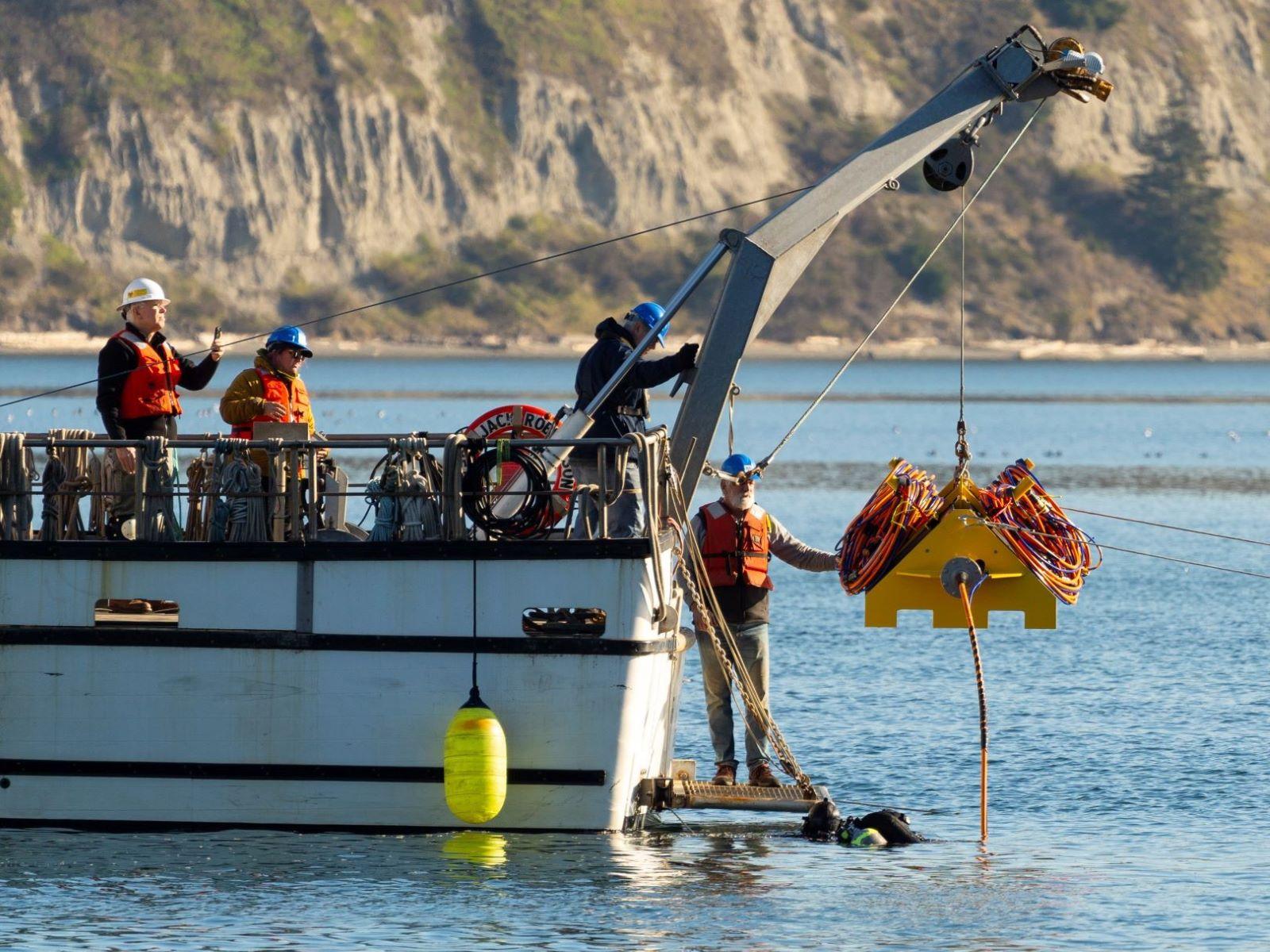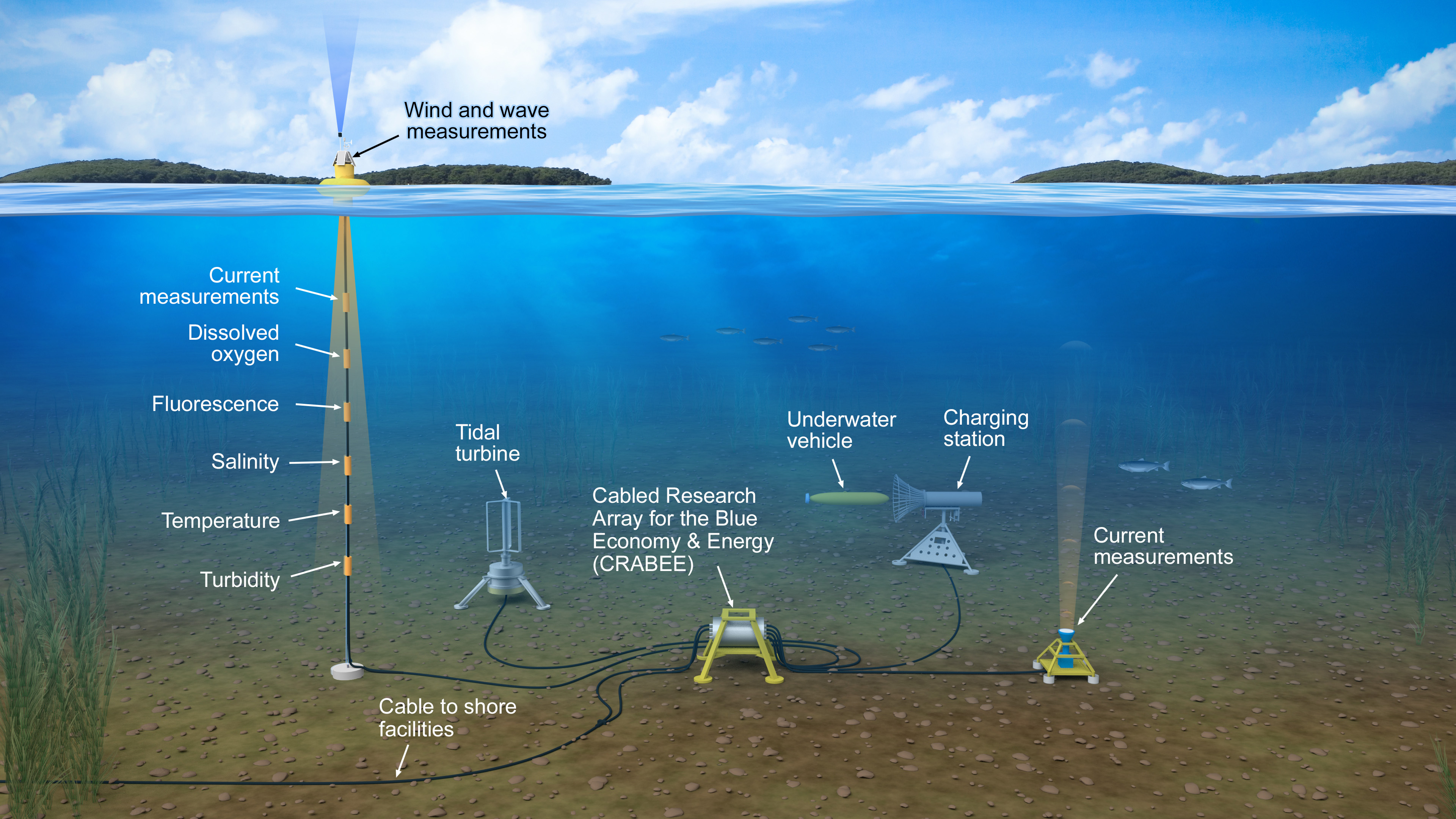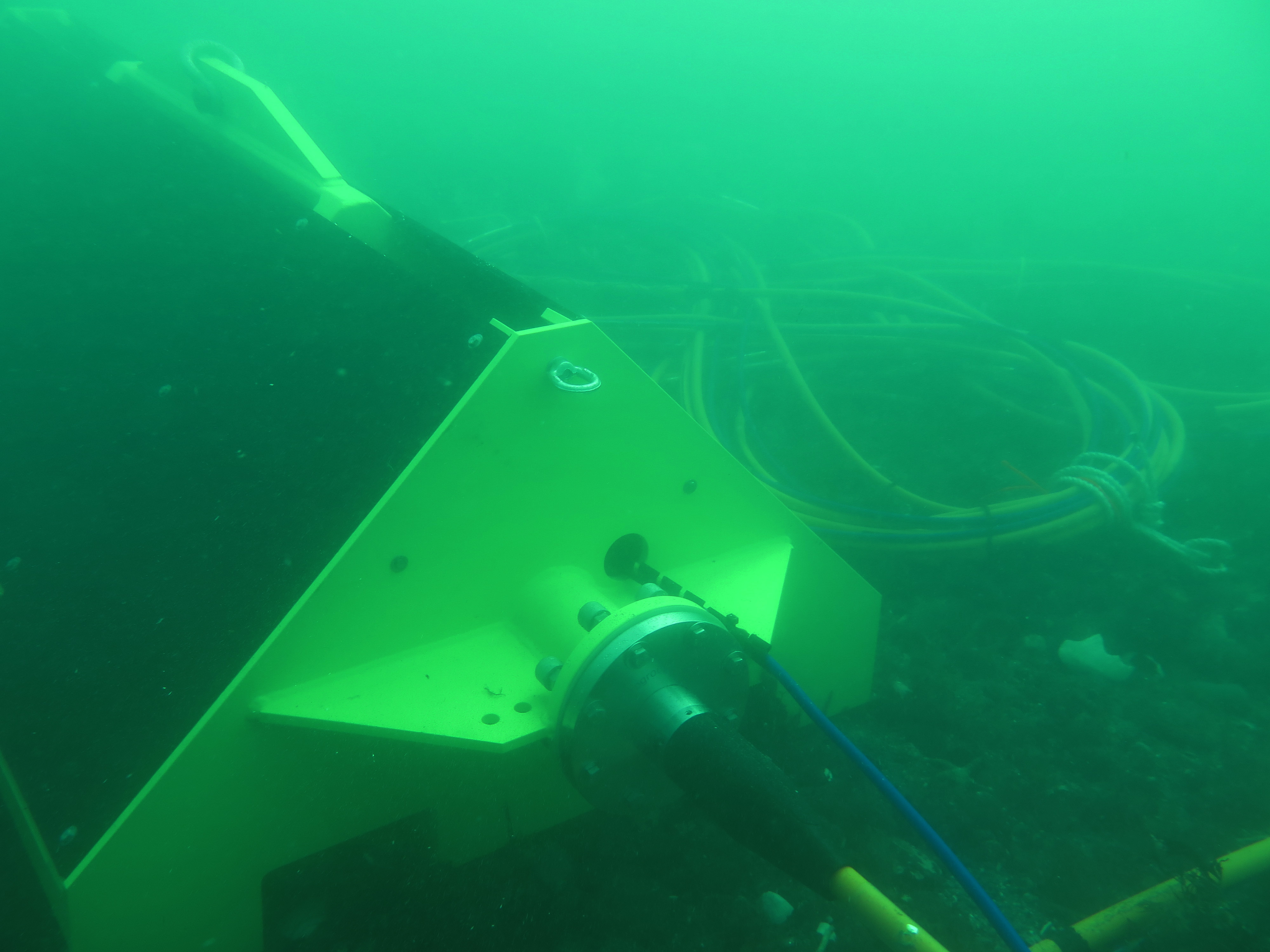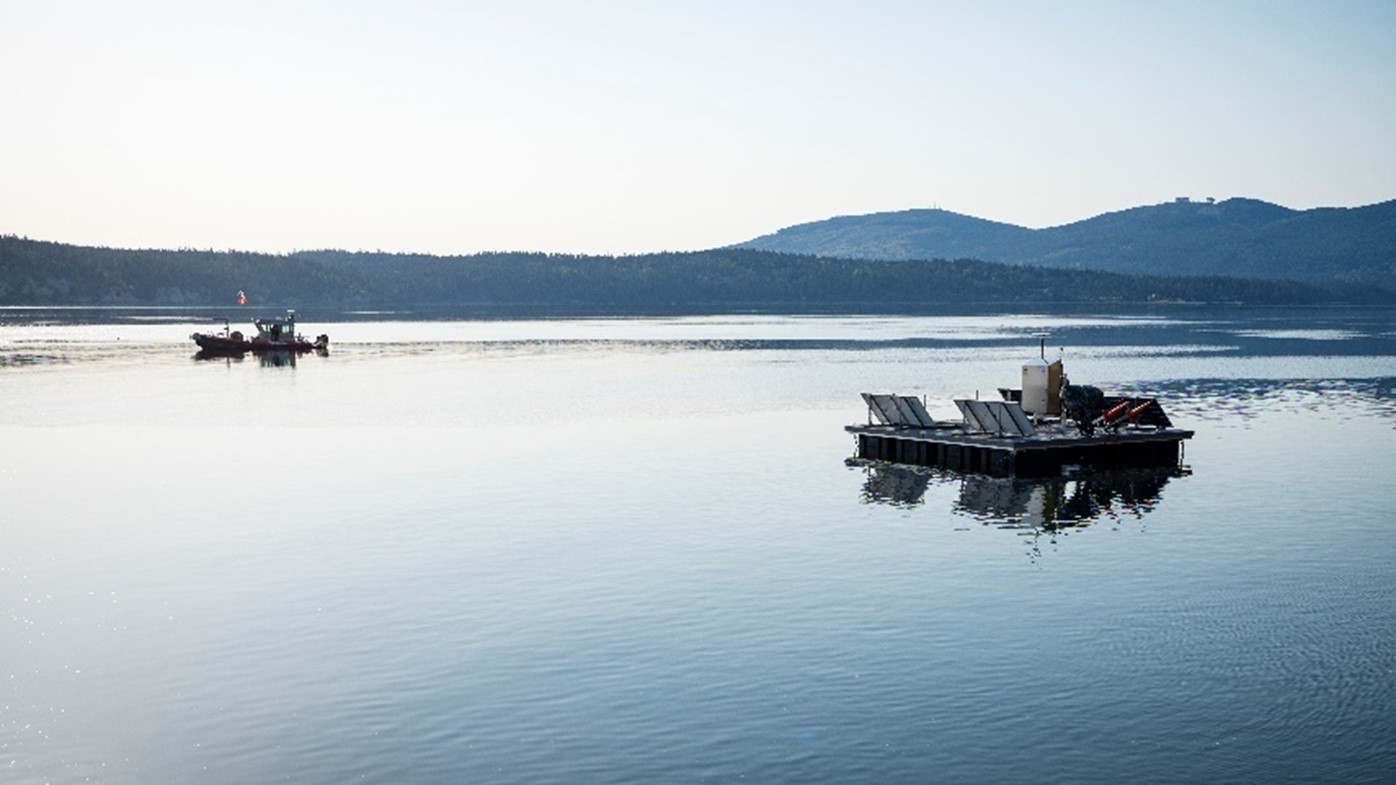CRABEE
Cabled Research Array for the Blue Economy and Energy (CRABEE): Enabling Access to a High-Energy Environment for Streamlining Marine Energy and Blue Economy Technology Research and Development
Sequim, WA
United States

Installation of the CRABEE node.
(Photo by Shanon Dell | Pacific Northwest National Laboratory)
In January 2025, the Pacific Northwest National Laboratory (PNNL)-Sequim campus deployed the Cabled Research Array for the Blue Economy and Energy (CRABEE) into the water, which provides power and data connectivity to Sequim Bay from the only Department of Energy (DOE) marine research facility.


PNNL-Sequim is uniquely positioned adjacent to a swift tidal channel leading to a quiescent bay protected from harsh open-ocean conditions. Just meters from the laboratory, water accelerates to speeds useful for power generation from novel marine energy technologies like tidal turbines. Harvested energy can power underwater vehicles and sensors or be stored in batteries. With access to this environment, researchers and developers can test and demonstrate their technologies, benefiting from the expertise and capabilities of PNNL-Sequim.
The CRABEE system, funded by DOE’s Water Power Technologies Office, provides power and data connectivity directly to deployed technology from an underwater node positioned in the channel and can be thought of as an underwater power strip and router for connecting different technologies, devices, or extension cables to other parts of the bay.
It streamlines deployments and allows for rapid iteration through a single connection back to the facility, where researchers can monitor performance and analyze collected data, saving time and money. Up to 40 kilowatts (kW) of power and fiber optic data capability enable testing of simultaneous ocean observing, autonomous vehicle charging, energy harvesting, or other novel technologies at the frontier of innovation.

Commissioning
The first system to connect to the CRABEE network was a floating platform deployed in Sequim Bay that featured solar panels and an advanced environmental monitoring system, as part of the Washington State Department of Commerce–funded Integrated Renewable Energy Systems (IRES) project. Power supplied through CRABEE allowed underwater sensing, including photography. The platform was deployed in May 2025 and recovered in June 2025.

Fast facts
- Up to 40 kW of power.
- Peak flow speeds over 2 m/s in-channel.
- Connection to coastal microgrid with storage.
- Four extensions for testing and future expansion.
Phases of implementation
The CRABEE system is designed for expansion to further its utility for advanced ocean science and technology research and deployment.
- PHASE ONE: The core CRABEE system, consisting of a node and four short extensions in the tidal channel at the entrance to Sequim Bay, is connected to PNNL-Sequim and commissioned.
- PHASE TWO: A longer extension is planned to bring power and data connectivity to a deeper and more protected area of Sequim Bay, away from fast tidal currents.
- PHASE THREE: An underwater dock and charging station for autonomous underwater vehicles is planned for deployment and connection to the deeper water extension.
- FUTURE VISION: Extension into the Strait of Juan de Fuca and beyond will enable ongoing sensing and marine energy research, providing environmental data and collaboration opportunities across the region.
